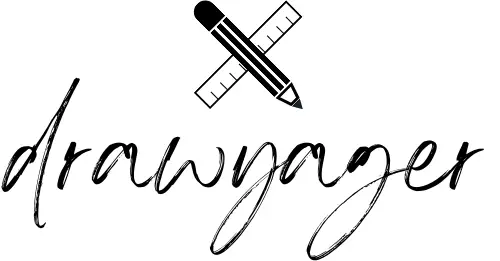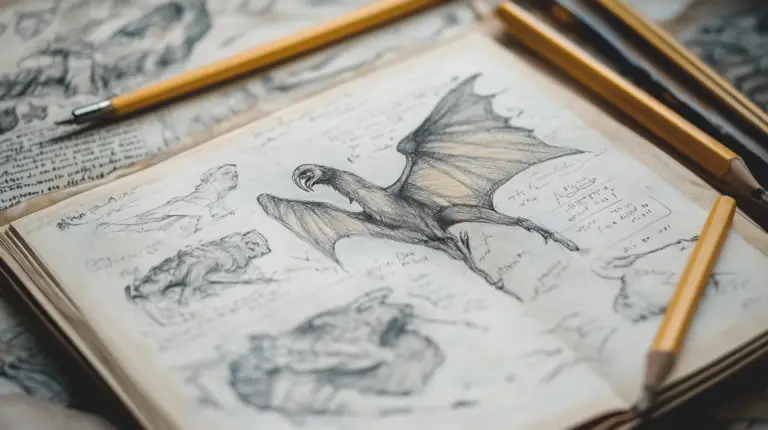Discovering surrealism drawing ideas can ignite your imagination and push the boundaries of your artistic expression. Surrealism’s unique melding of the conscious and dream worlds encourages us to explore the unlikely and the extraordinary. Picture a human walking down a sidewalk, melting into it, or a rabbit with human fingers for ears – such evocative images challenge reality and invite deeper interpretation.
This book introduces the Surrealist movement's origins and sensational legacy, one of the most profound and enduring influences on film, theater, literature, art, and thought.
Featured artists: Hans Arp, André Breton, Giorgio de Chirico, Salvador Dalí, Max Ernst, Alberto Giacometti, Paul Klee, René Magritte, André Masson, Matta, Joan Miró, Pablo Picasso, Meret Oppenheim, Yves Tanguy.
I often find inspiration in the way surrealism forces us to question the ordinary. Whether it’s the oscillation technique pioneered by Max Ernst or the dreamlike illustrations featured here, surrealism drawing ideas offer endless possibilities. Each surrealist drawing is a journey into the subconscious, blending meticulous detail with the wildest of imaginations.
At first, I will start with some techniques and styles to get the creative motor started – but you can skip to the surrealism drawing ideas directly if you want to.
Artistic Techniques and Styles
I’ll cover some of the key techniques used in surrealist art, focusing on approaches like automatic drawing, creating unexpected imagery, and the applications of frottage, grattage, and decalcomania. These methods are designed to bypass the rational mind and tap into deeper layers of creativity. This way, you can bring you surrealism drawing ideas to paper.
Automatism and Automatic Drawing
Automatism is a foundational technique in surrealism. It involves the artist allowing their hand to move freely across the medium without conscious control. The idea is to access the subconscious mind and produce artwork unaffected by the rational mind.
Automatic drawing involves making marks and shapes spontaneously, which can later be interpreted or developed into more detailed images. This technique also includes automatic writing, where the artist writes without a specific aim, letting random words and phrases emerge.
Methods of Creating Unexpected Imagery
Surrealist artists often used various methods to create unexpected and bizarre imagery that defied conventional logic. One popular approach is collage, combining unrelated images from magazines, newspapers, and photos to create new, surreal scenes. This method breaks away from traditional composition rules, encouraging spontaneous creativity.
Photomontage, a similar technique, involves cutting and assembling photographs to produce new, often fantastical images. Artists like Max Ernst employed these techniques to great effect, generating scenes that challenge our understanding of reality.
Use of Frottage, Grattage, and Decalcomania
Frottage involves rubbing a pencil or other drawing tool over a textured surface to capture its impression on paper. This technique reveals hidden patterns and forms that can inspire further artistic exploration. Grattage, on the other hand, involves scraping or scratching paint from a canvas to reveal underlying layers and textures.
Decalcomania is the process of pressing paint between two surfaces and then pulling them apart to create unexpected patterns and images. This method allows for a high degree of randomness and can lead to some truly unique outcomes.
Artists like Salvador Dali and Max Ernst have pushed the limits of these techniques to create complex, highly imaginative works. By incorporating frottage, grattage, and decalcomania into your practice, you can discover countless new possibilities for your surrealism drawing ideas.
Themes And Surrealism Drawing Ideas
Exploration of Identity and the Self
- Fragmented Self-Portrait: Draw a self-portrait with the face fragmented into puzzle pieces, some missing or misplaced.
- Mirror Reflections: Sketch a person looking into a mirror, but the reflection shows a completely different identity.
- Tree of Life: Draw a person with branches growing out of their body, each branch representing different aspects of their personality.
- Metamorphosis: Illustrate a person transforming into an animal or another being, capturing the fluidity of identity.
- Masked Figures: Create a drawing of individuals wearing various masks, each symbolizing different facets of their identity.
- Inner Child: Depict an adult with a transparent section revealing a child inside, symbolizing the inner self.
- Faces Within Faces: Draw a face made up of smaller faces, each representing different emotions or identities.
- Shadow Play: Sketch a person’s shadow taking on a life of its own, revealing a hidden or alternate identity.
- Identity Maze: Create a labyrinth with various entrances and exits, each leading to a different portrayal of the self.
- Cultural Mosaic: Illustrate a person made up of various cultural symbols and artifacts, representing a multifaceted identity.
Nature and the Organic in Surrealism Drawing Ideas
- Human-Plant Hybrids: Draw people with plant features like leaves for hair or roots for legs.
- Surreal Landscapes: Create a landscape where natural elements are exaggerated or fantastical, like floating mountains or inverted trees.
- Blooming Animals: Sketch animals with flowers growing out of them, merging fauna with flora.
- Weather Personified: Illustrate the weather as human-like figures, such as a rain woman or a sunny man.
- Nature’s Eye: Draw an eye with natural scenes reflected in the iris, like forests or oceans.
- Symbiotic Relationship: Depict humans and animals living in perfect harmony, interconnected with vines or roots.
- Cosmic Garden: Create a garden where plants grow planets or stars instead of flowers.
- Insect Metropolis: Sketch a city built by insects, with structures inspired by their natural habitats.
- Aquatic Utopia: Illustrate an underwater world where marine life and human elements coexist in harmony.
- Elemental Guardians: Draw mythical creatures representing the elements (earth, water, fire, air) in an organic, natural setting.
For some inspiration, you can read Landscape Drawing Ideas: Tips and Inspiration for Beginners 2024.
Reflections on Society and Politics
- Corporate Beasts: Draw businessmen with animal features to critique corporate greed and dehumanization.
- Tower of Babel: Illustrate a modern-day Tower of Babel with different cultures and languages clashing in a chaotic yet structured form.
- Media Puppet: Depict a person controlled by strings attached to media devices like TVs and smartphones.
- Wall of Faces: Sketch a wall made up of numerous faces, symbolizing the barriers between different societal groups.
- Caged Freedom: Draw a bird in a gilded cage, representing the illusion of freedom in society.
- Monetary Chains: Illustrate people chained by money, depicting how society is bound by financial constraints.
- Silent Protest: Draw a group of people with their mouths sewn shut, symbolizing silenced voices in political discourse.
- Blind Justice: Depict Lady Justice with exaggerated scales, heavily tilted, and blindfolded with modern technology.
- Environmental Destruction: Sketch a cityscape intertwined with dead or dying nature to reflect environmental neglect.
- Dystopian Parade: Illustrate a parade of robotic figures marching under oppressive banners, critiquing totalitarian regimes.
Dream-Inspired Imagery
- Floating Islands: Draw islands floating in the sky with impossible landscapes.
- Endless Stairs: Create a scene with staircases leading nowhere, inspired by M.C. Escher.
- Time Melting: Sketch clocks melting over everyday objects, echoing Salvador Dalí’s style.
- Dream Train: Illustrate a train traveling through a surreal landscape, with bizarre and whimsical passengers.
- Starry Night Animals: Draw animals made of stars, blending celestial elements with earthly creatures.
- Surreal Room: Depict a room where the furniture and objects defy logic, like floating chairs or a liquid floor.
- Portal to Dreams: Sketch a portal or doorway that leads to a fantastical dream world.
- Morphing Objects: Draw everyday objects that morph into dreamlike forms, like a teapot turning into a cloud.
- Ethereal Garden: Create a garden where plants glow and float, creating an otherworldly atmosphere.
- Dreamer’s Balloon: Illustrate a person floating with a balloon that contains a miniature dream world inside it.
Combining the Familiar with the Unexpected
- Urban Jungle: Draw a city where buildings are made of natural elements like trees and rocks.
- Mechanical Animals: Illustrate animals with robotic or mechanical parts, blending nature with technology.
- Giant Insects: Depict oversized insects interacting with humans in a normal setting, like a giant butterfly in a living room.
- Furniture with Personality: Sketch household items like chairs and tables with human-like features or expressions.
- Hybrid Creatures: Create creatures that are combinations of different animals, like a bird with fish scales.
- Magical Books: Draw books with scenes coming to life from their pages, merging literature with reality.
- Living Architecture: Illustrate buildings with organic features, like houses with tree limbs or roots.
- Surreal Vehicles: Depict vehicles that defy logic, such as cars with legs or bicycles with wings.
- Inverted World: Create a scene where the sky is below and the ground is above, with people walking upside down.
- Food Fusion: Draw food items combined with unexpected elements, like a burger with a garden inside or an ice cream cone with flames.
Try these surrealism drawing ideas and use the above-mentioned techniques and styles. I’m sure you will create something great!
What are some simple approaches to creating a surrealist drawing?
To start, combine unrelated objects in unexpected ways. Think about drawing a human with animal features or everyday items morphing into something unusual. Another approach is using automatic drawing, letting your hand move freely without planning, inspired by the work of André Breton.
How can I use color to enhance my surrealist artwork?
Color can set the mood and enhance the dreamlike quality of your piece. Bold, contrasting colors can create a sense of tension or excitement, while muted tones might evoke a mysterious atmosphere. Experiment with unexpected color combinations to heighten the surreal effect.
Who are some notable artists to study for surrealist drawing techniques?
Study artists like Salvador Dalí, whose meticulous detail and bizarre imagery define his work. René Magritte is another key figure, known for his thought-provoking scenes. Additionally, explore the dreamlike compositions of Max Ernst for more inspiration.
How can I explain the meaning behind my surrealist drawings?
When explaining your surrealist work, focus on the emotions and subconscious ideas you’re expressing. Surrealist art often explores the unconscious mind, dreams, and fantasies. It’s okay if your explanation is abstract or open-ended; the ambiguity can be part of the charm.
What are some surrealist art project ideas suitable for children?
Children can enjoy creating surrealist art by drawing fantastical creatures or combining different parts of animals and humans. Simple activities include making collages from magazine cutouts or drawing scenes that merge reality with fantasy, like a fish swimming in the sky.
What are the core themes that are commonly explored in Surrealist art?
Surrealist art often explores themes like dreams, the unconscious mind, and the juxtaposition of ordinary objects in extraordinary contexts. Other common themes include irrationality, fantasy, and the blending of reality and imagination. These elements help create the distinctive surrealist experience.
If you liked this blog post about the topic: “Surrealism Drawing Ideas”, don’t forget to leave me a comment down below to tell me about your experience with it.

















































